Art and the Internet, edited by Phoebe Stubbs, with contributions from Joanne McNeill, Domenico Quaranta and Nick Lambert.
(Available on amazon UK and USA.)
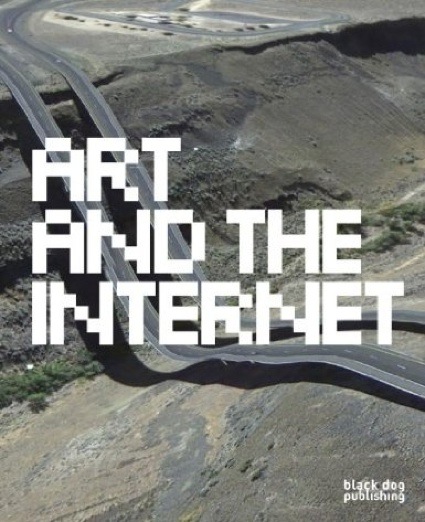
Publisher Black Dog Publishing writes: Art and the Internet is a much-needed visual survey of art influenced by, situated on and taking the subject of the internet over the last two and a half decades. From the early 1990s the internet has had multiple roles in art, not least in defining several new genres of practitioners, from early networked art to new forms of interactive and participatory works, but also because it is the great aggregator of all art, past and present. Art and the Internet examines the legacy of the internet on art, and, importantly, illuminates how artists and institutions are using it and why.
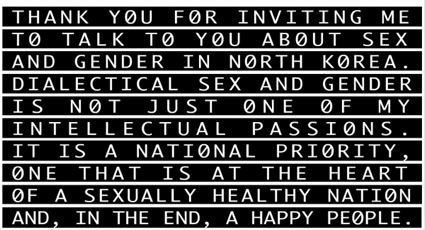 Young-Hae Chang Heavy Industries (image via ilikethisart)
Young-Hae Chang Heavy Industries (image via ilikethisart)
To be honest, my first reaction when faced with a book dealing with ‘internet art’ was akin to the cries uttered by a heretic about to find himself into the hands of Tomás de Torquemada (the only thing i can say in my defense is that my job exposes me to an awful amount of really bad online art.) In theory, i’m not a fan. However, a quick look in the book made me realize that i shouldn’t be so hasty in my judgement. You see, internet art or net.or or web-based art or however you wish to call it is not monodimensional. It comes with depths and with as many opportunities for interpretations and distortions as its purely ‘physical’ equivalents. So yes, i was definitely not jumping for joy when i read the words ‘art and the internet’ but then i opened the pages and they were all there! JODI, Young-Hae Chang Heavy Industries, Vuk Cosic (please bribe this man out of his art-retirement), Alexei Shulgin, etc. All of whom i believe are all quite genius. And then there’s the new generation of artists, pranksters and activists who like you and i, probably spend far too much time on the internet but have the excuse of turning it into spectacular, thought-provoking or simply amusing works.
Art and the Internet opens with 3 essays. Nicholas Lambert explores how web-based art has been embraced (or rather not really embraced) by art galleries and institutions. Joanne McNeill looks at how moments of intimacy are shared via web cams. Domenico Quaranta takes a more historical approach to net.art and to its relationship with physical space. Each of these essays communicate splendidly the gaiety, wit, diversity and charm of art on the internet.
The book closes on interviews with Attila Fattori Franchini, LuckyPDF, Eva and Franco Mattes and Marisa Olson and on seminal texts about art and/in the internet by some of its most recognised rock stars: Alexei Shulgin, Miltos Manetas, Olia Lialina, John Perry Barlow, etc.
It often seems that internet has been created for the sole purpose of having people droll over cute cats and then stick their head into home appliances to recover from the emotion. Art and the Internet demonstrates not only that there’s nothing wrong with that but also that internet art deserves a greater offline exposure.
Now for a couple of remarkable works i discovered or rediscovered in the book:
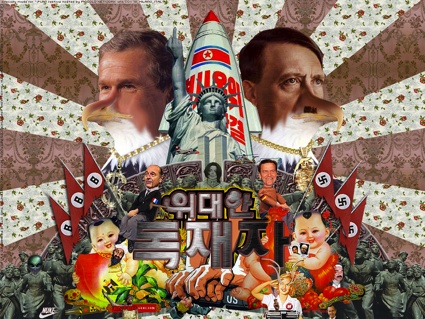

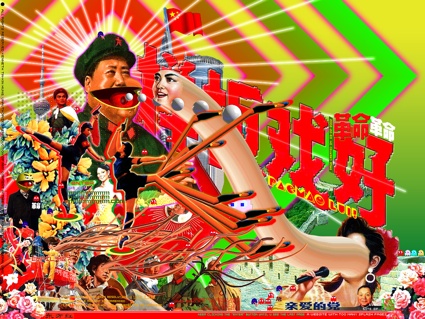 Kenneth Tin-Kin Hung, 60X1.com, 2003
Kenneth Tin-Kin Hung, 60X1.com, 2003
The very garish, very dazzling 60X1.com throws into a tumble dryer photos of political figures, pop culture icons and images found in cyberspace. The result is as user-unfriendly as possible: the domain name is not catchy, the file size are slow to appear on the screen (at least they were at the time) and it’s a struggle to locate the word ‘enter’ that will lead you to the next page where another word ‘enter’ will be carefully hidden. After going through a series of splash pages, the visitor realizes that there is no destination to explore, that it’s journey ends there as there is in fact no core content.
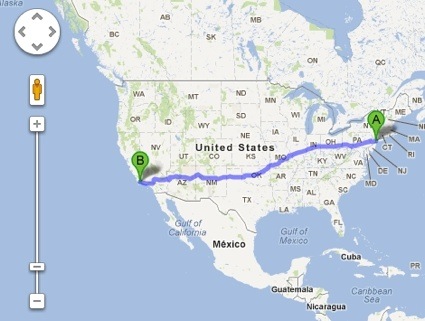 Charles Broskoski, Directions to Last Visitor, 2011
Charles Broskoski, Directions to Last Visitor, 2011
Directions to Last Visitor demonstrates how easy it is to geographically locate users through their IP address. Log on to the website and it will use the Google Maps API to show you the driving directions to the (physical) address of the last person who visited the website. The project makes you realize how simply typing an url can lead to further dissolution of your privacy.
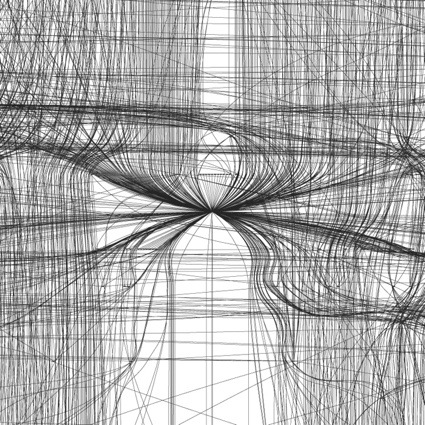 Owen Mundy, I’m Unable to Fulfill Your Wish, 2011
Owen Mundy, I’m Unable to Fulfill Your Wish, 2011
I’m Unable to Fulfill Your Wish are ‘dystopian visualizations’ that use a computer program to streamline data from social networking websites and turn them into delicate, basic but also anonymous graph drawings.
Ultimately, the works highlight the inability of interfaces and other digital spaces to represent the complexity of everyday life and question whether technology and open data will ever achieve its utopian promise.
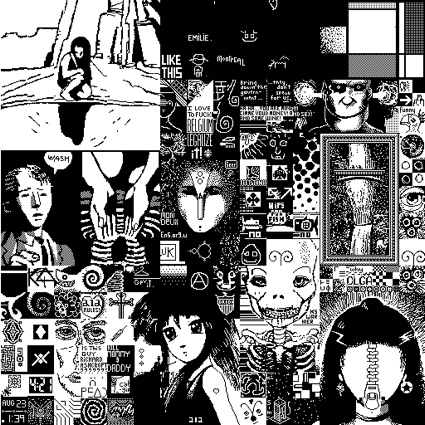 Andy Deck, Glyphiti, 2001
Andy Deck, Glyphiti, 2001
Glyphiti is composed by multiple, anonymous participants who edit a “drawing wall” collaboratively by working on one 32 x 32 pixel section at a time.
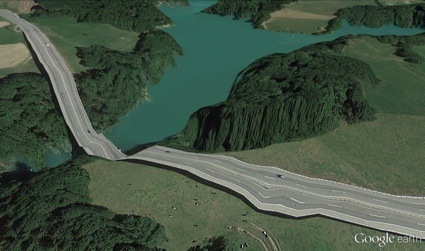
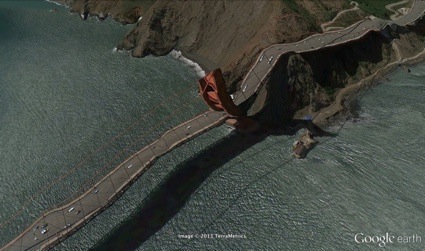
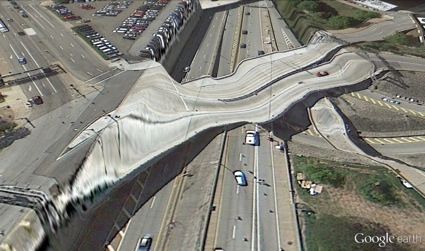
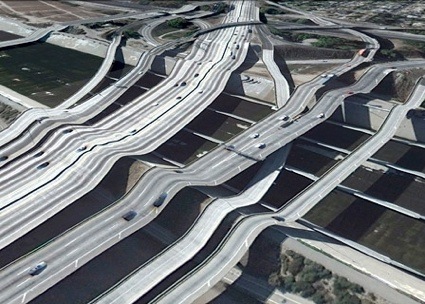 Clement Valla, Postcards from Google Earth, 2011-2013
Clement Valla, Postcards from Google Earth, 2011-2013
Clement Valla fortuitously discovered what he first thought were glitches on Google Earth images. However, these broken images are the result of a constantly of the constant and automated data collection handled by computer algorithms. In these “competing visual inputs”, the 3D modellings of Earth’s surfaces fail to align with the corresponding aerial photography.
Google Earth is a database disguised as a photographic representation. These uncanny images focus our attention on that process itself, and the network of algorithms, computers, storage systems, automated cameras, maps, pilots, engineers, photographers, surveyors and map-makers that generate them.
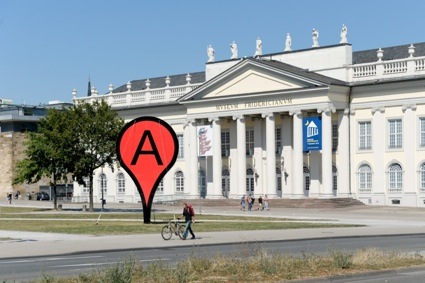 Aram Bartholl, Map at ‘Hello World!’ Kasseler Kunstverein, Fridericianum 2013
Aram Bartholl, Map at ‘Hello World!’ Kasseler Kunstverein, Fridericianum 2013
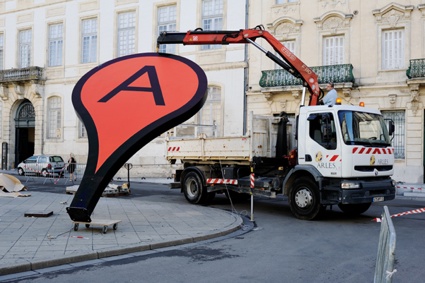 Aram Bartholl, Map at Rencontre Arles ‘From Here On’. Photo by Anne Foures, 2011
Aram Bartholl, Map at Rencontre Arles ‘From Here On’. Photo by Anne Foures, 2011
Aram Bartholl’s iconic Map drags Google Maps red map marker into the street.
In the city center series ‘Map’ is set up at the exact spot where Google Maps assumes to be the city center of the city. Transferred to physical space the map marker questions the relation of the digital information space to every day life public city space. The perception of the city is increasingly influenced by geolocation services.
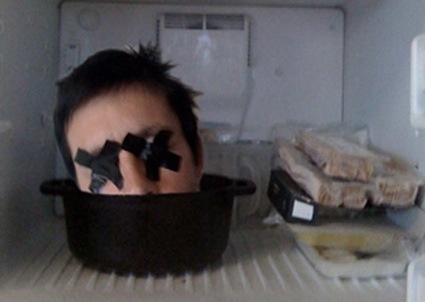 David Horvitz, 241543903, 2006-ongoing (image via urlesque)
David Horvitz, 241543903, 2006-ongoing (image via urlesque)
 David Horvitz, 241543903, 2006-ongoing (Image via artribune)
David Horvitz, 241543903, 2006-ongoing (Image via artribune)
David Horvitz‘s Heads in Freezers is as simple as its title. People are invited to take a picture of their head in freezers. The twist is that they must tag it with “241543903” and uploaded it to social media sites.
Now a quick image search of the number 241543903 shows pages after pages of people shoving their heads into freezers.
